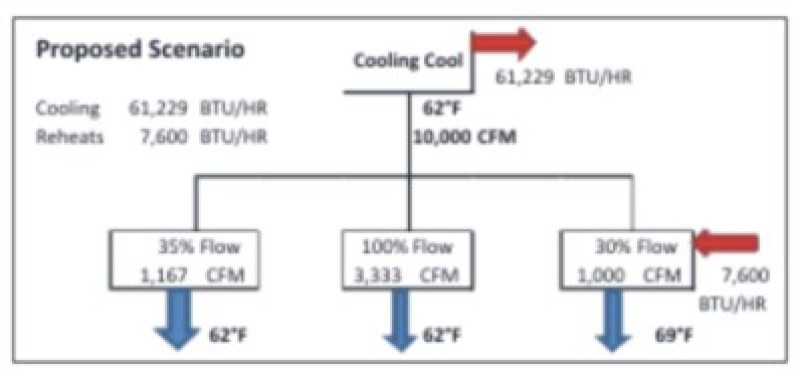
Why work so hard?
Many buildings are working twice as hard for no added benefit while earning a bloated energy bill. The reason for these exorbitant costs is simultaneous heating and cooling. You may say. “That’s not happening at our facility, we have a brand new energy management system that guarantees we run efficiently.” One thing I have learned in the energy efficiency field is that having an energy management system guarantees nothing. Look at Energy’s Journal: May 20XX: Simultaneous Heating & Cooling for more examples and the costs of simultaneous heating and cooling.
What is simultaneous heating and cooling?
The short answer is: simultaneous heating and cooling occurs whenever the HVAC system either first cools the air and reheats it to the supply air temperature or heats the air and then cools it to the supply air temperature. In summertime you even pay to remove heat and pay again to put it back in, simultaneously – get it? In some cases this is necessary for summer humidity control, but this too can be greatly limited or eliminated.


Who would ever do that?
Simultaneous heating and cooling is unfortunately a fact of life when dealing with many HVAC designs. The trick is limiting it to the minimal amount of heating and cooling as possible. There are several common causes including inappropriate discharge air set points (from an air handler or makeup air unit) and high minimum variable air volume (VAV) box positions.
The Scenario – An air handling unit provides 55°F air to three spaces, or temperature control zones each with a temperature sensor. The three spaces are getting 65°F, 55°F, and 70°F to maintain room temperature. We are assuming dehumidification is not required. In the figure you can see the building requires a large amount of cooling and reheat to maintain these temperatures due to multiple reasons. They included the fixed cooling set point of 55°F and the minimum box position set at 50% flow.
The Solutions
Allowing the cooling coil discharge temperature to float when dehumidification is not required reduces cooling energy as well as reheat energy. Adjusting the minimum box position lower while staying within code limits for ventilation gives the VAV box more flexibility to control room temperature without forcing the reheats to turn on or reset the cooling coil discharge temperature lower, as shown in the proposed scenario. One can see that the cooling load and reheat load has been significantly reduced by 61% and 82% respectively.
Getting people to turn lights off and put computers to sleep reduces energy bills to some degree, but if you want real impacts, potentially in the 20-30% range and even higher in some cases, major mechanical systems need to be optimized. The lights make for a nice fat panfish, but the 200 lb marlins swim amidst major mechanical systems and controls.




